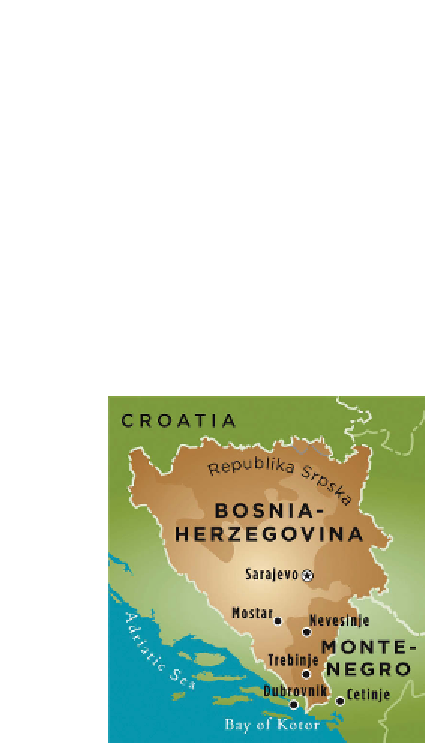Travel Reference
In-Depth Information
emperors, crusaders, bishops, and sultans have shaped a region that's extremely
diverse...and unusually troubled. h ese troubles are most profound in the
former Yugoslavia—roughly the western half of this peninsula.
Yugoslavia's delicate ethnic balance is notoriously dii cult to grasp. h e
major “ethnicities” of Yugoslavia were all South Slavs—they're descended
from the same ancestors and speak closely related languages. h e only big
dif erence: h ey practice dif erent religions. Catholic South Slavs are called
Croats; Orthodox South Slavs are called Serbs; and Muslim South Slavs
(whose ancestors converted to Islam under Ottoman rule) are called Bos-
niaks. For the most part, there's no way that a casual visitor can determine
the religion or loyalties of the people just by looking at them.
While relatively few people are actively religious here (thanks to the
stil ing atheism of the communist years), they i ercely identify with their
ethnicity. And, because ethnicity
and faith are synonymous, it's easy
to mistake the recent conl icts for
“religious wars.” But in reality, they
were about the politics of ethnicity
( just as the “ Troubles” in Ireland
are more about British versus Irish
rule than simply a holy war between
Catholics and Protestants).
“Yugoslavia” was an artii cial
union of the various South Slav
ethnicities that lasted from the end
of World War I until 1991. Follow-
ing the death of its strong-arm leader Tito, a storm of ethnic divisions, a
heritage of fear and mistrust, and a spate of land-hungry politicians plunged
Yugoslavia into war. Many consider the conl ict a “civil war,” and others
see it as a series of “wars of independence.” However you dei ne the wars,
they—and the ethnic cleansing, systematic rape, and other atrocities that
accompanied them—were simply horrii c. It's almost miraculous that after
a few bloody years (1991-1995), the many factions laid down their arms
and agreed to peace accords. An uneasy peace—i rmer and more inspiring
with each passing year—has settled over the region.
And yet, hard feelings linger. As a travel writer, I've seen again and
again that talking about this region is fraught with controversy. Every time























































































